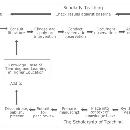 FMHS Everything Teaching
FMHS Everything Teaching
Scholarly teaching
One of the distinguishing features of tertiary education is the strong link between research and the educational experience. University teachers are usually academics who are required to combine research, teaching and service activities. Teaching and learning is typically structured around subject disciplines, and the body of knowledge that underpins the learning is largely developed through research activities: research projects; publications and involvement in a research community. In short, good teaching is informed by subject discipline research.
In addition to being informed by subject discipline research, teaching can be informed by research into teaching and learning. When this happens, teaching practice becomes scholarly.
Richlin (see Further Reading) has provided a very clear and concise explanation of scholarly teaching. His explanation also makes a clear and useful distinction between scholarly teaching and the scholarship of teaching. Richlin describes the scholarly process as follows:
- Identify the problem or opportunity: The scholarly process begins with the identification of a problem the teacher would like to solve or with the identification of an opportunity that can be realised. For example, the teacher might notice that students seem to be consistently struggling with a particular concept or the teacher might see a new technology as providing a way to do things in a different way.
Establish a baseline of activity: Stage two in the scholarly process consists of establishing a baseline of activity. For example, are students failing to achieve particular learning outcomes? Are students consistently scoring badly on a particular assessment? The success or otherwise of the intervention will be judged against this baseline.
Review existing practice: The next stage is to look at what others have done. This stage involves consulting the relevant literature to see what has been done to solve the problem or to realise the opportunity that is being considered. For example, a teacher might decide to take a case based approach to teaching a particular concept. The teacher would then consult the literature on case based learning.
Select an appropriate intervention: The next step in scholarly teaching is to select an appropriate intervention and to justify the selection with reference to the literature.
Intervene, monitor and document: The next stage consists of implementation, observation, recording of evidence and evaluation of evidence. The details of this process will differ according to the nature of the intervention. For example, the implementation, observation, recording and evaluation of a case based learning will differ from the implementation, observation, recording and evaluation of an online discussion forum. However, no matter what the intervention, the process of observation, recording and evaluation must be systematic and rigorous.
Evaluate: The final stage is to consider the success (or otherwise) of the intervention through comparing the results to the baseline.
|
|
Scholarly teaching comes to an end with the completion of stage 6. Teachers who progress beyond that point are engaging in the scholarship of teaching. |
Colleague's view
|
Helen Sword from the Centre for Learning and Research in Higher Education talks about scholarly teaching
Download the mp4 file [3.0 MB] |
 Show play log
Show play log
Portfolio Possibilities
 Check
Check
Do I...
- Take a scholarly approach to my teaching?
- Draw on current research around teaching and learning in an attempt to improve student outcomes?





